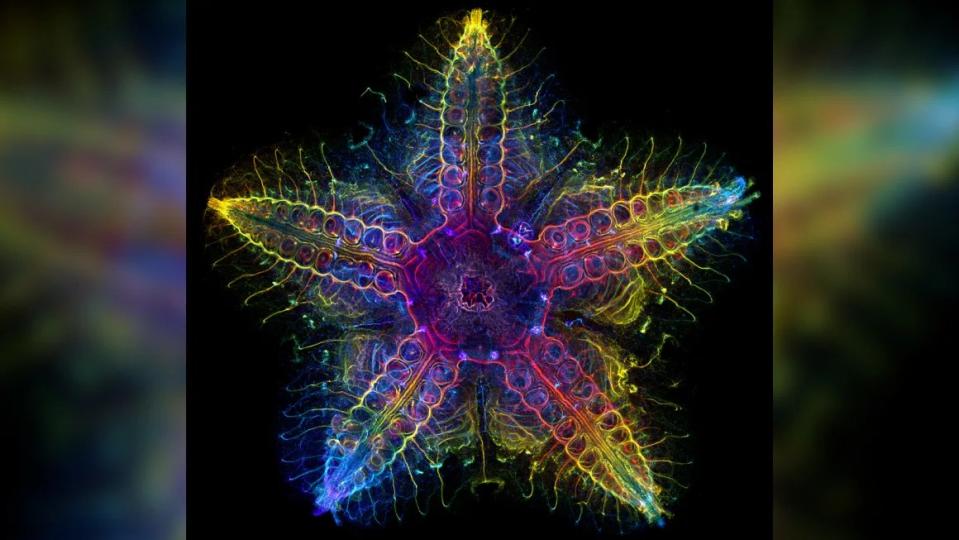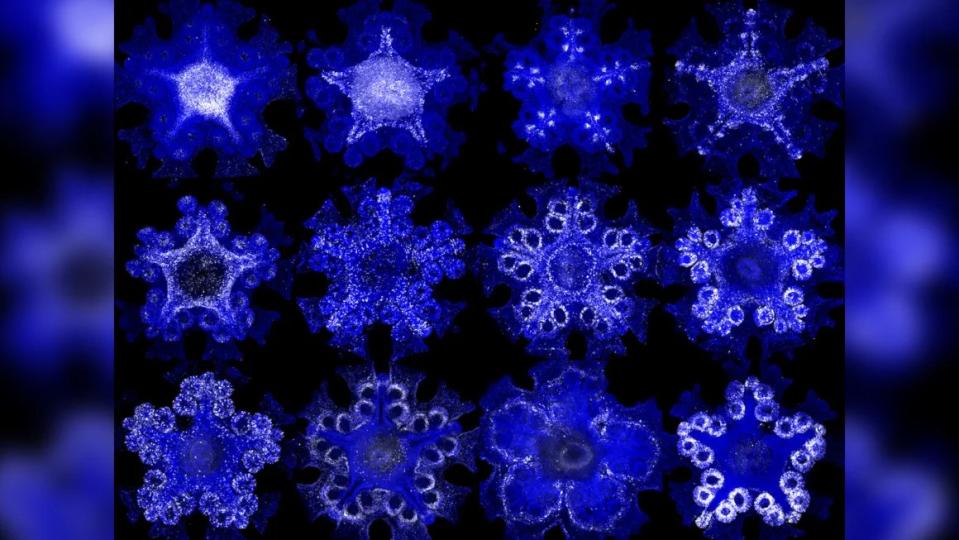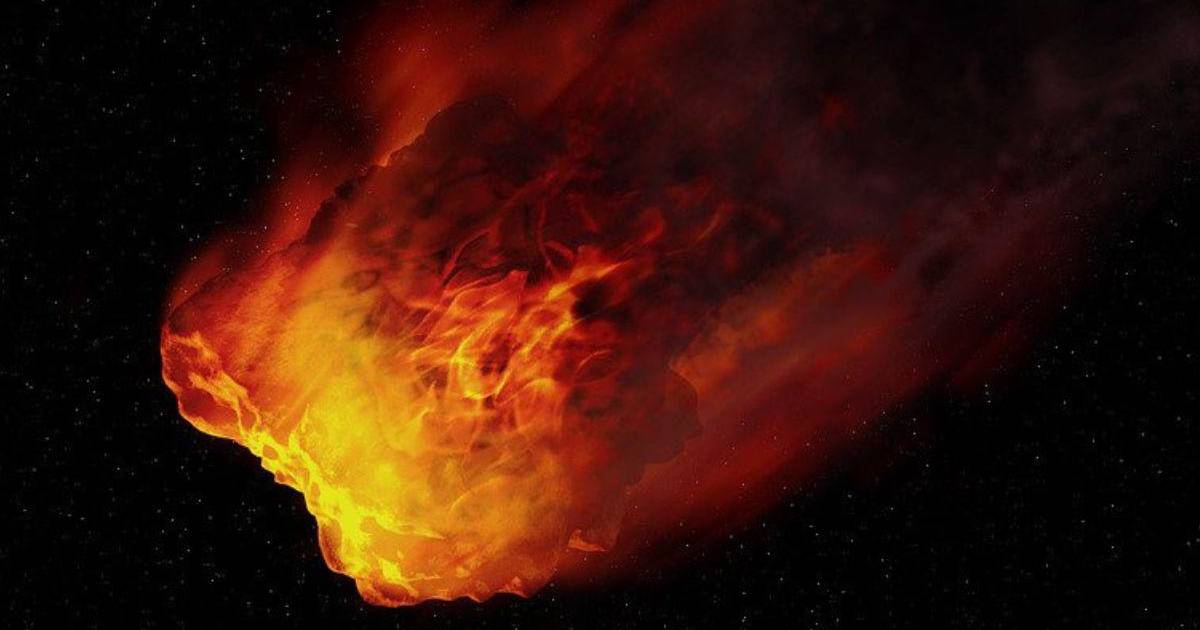(CNN) — Most animal heads are easily recognizable. But so far scientists haven’t been able to say the same about starfish.
A starfish has five identical arms with a layer of “tube feet”. Below that helps marine life to navigate the seabed. This has naturalists wondering if starfish have defined front and back ends… and if they even have heads.
But new genetic research suggests the opposite: starfish are mostly heads without bodies or tails, and they may have evolved to lose those features over time. Strange fossils of starfish ancestors, researchers say Evolution seemed to have a kind of trunk, according to the new findings.
The results were published in the journal Wednesday Nature.
“It’s as if the starfish is missing its entire trunk And it’s best described as a simple head dragging on the seabed,” study lead author Laurent Fourry, a postdoctoral fellow at Stanford University and the University of California, Berkeley, said in a statement. “It’s nothing. Scientists have speculated about these animals.
Inventions made possible by New genome sequencing methods, They may help answer some key questions that remain about echinoderms, including their shared ancestry with humans and other animals.
Unique body structure
Starfish They belong to the group of echinoderms, These include sea urchins, sand dollars (or sea biscuits) and sea cucumbers. These unusual animals have a unique body, Arranged into five equal segments, it differs greatly from the symmetrical bodies of bilateral animals, which mirror each other on the sides, left and right.
Starfish begin as fertilized eggs that hatch into floating larvae that take weeks or months to settle on the ocean floor. There they go through a process that transforms a dihedral body into a star-shaped or pentaradial body.
“It’s been a zoological mystery for centuries,” Christopher Lowe, co-lead author of the study and a marine and developmental biologist at Stanford University, said in a statement. “How can we go from bilateral to a pentaradial body plan, and how can we compare any part of a starfish to our own body plan?”
The bilateral body structure that most animals have comes from genetic activity at the molecular level that can be traced to the head and trunk, or main body, regions, which is why many vertebrates, including vertebrates such as humans and insects, share it. Genetic programming. This finding was presented Nobel Prize in Physiology or Medicine In 1995.
However, echinoderms share a common ancestor with amphipods, adding to the puzzle that researchers are trying to solve.
“How the different parts of the body of echinoderms are related What we see in other groups of animals remains a mystery to scientists.In its bilateral relatives, the body is divided into head, trunk and tail. But by looking at a starfish, one cannot see how these segments relate to the bodies of bipedal animals.”
Cracking the echinoderm code
In the new study, researchers used micro-computed tomography to obtain an unprecedented three-dimensional view of the starfish’s shape and structure.
Next, team members used advanced analysis techniques to determine where genes are expressed within tissues and to detect specific RNA sequences within cells. Gene expression occurs when the information contained in a gene is acted upon.
Specific molecular markers act as blueprints for the body, directing each cell to the part of the body it belongs to.
“If you peel back the skin of an animal and look at the genes that define the head of the tail, the same genes encode these body parts in all groups of animals,” Lowe explains. “So we ignore anatomy and ask ourselves: Is there a molecular axis hidden beneath all this strange anatomy and what role does it play in creating a pentaradial body structure in a starfish?“.
Together, the data created a 3D map to determine where genes are expressed as the starfish develops and grows. The team was able to determine the genes that control the development of the starfish’s ectoderm, which includes the skin and nervous system.
Genetic signatures associated with head development were identified in all starfish, Especially concentrated in the center of the star and at the center of each node. However, gene expression of trunk and tail segments is largely absent, with starfish “presenting the most dramatic example of the unraveling of head and trunk segments as we know them today.” “said Fourie, a researcher at the Zuckerberg BioHub, a nonprofit research institute in San Francisco.
The research was funded by the Chan Zuckerberg BioHub, co-founded by Dr. Priscilla Chan and Mark Zuckerberg in 2021, and by NASA, the National Science Foundation, and the Leverhulme Fund.
“When we compared starfish gene expression to other animal groups, such as vertebrates, there was an important part of the body structure that was missing,” Thompson explained. “The genes normally involved in shaping the animal’s trunk are not expressed in the ectoderm. The entire body structure of echinoderms appears to be more or less equivalent to the head of other groups of animals.”
Starfish and other echinoderms developed their unique body structures after their ancestors lost their trunks, allowing them to move and feed differently than other animals.
“Our research suggests that the body structure of echinoderms has evolved in a more complex way than previously thought and that there is much more to be learned about these enigmatic creatures,” Thompson said. “As someone who has studied them for the past ten years, these discoveries have radically changed the way I think about this group of animals.”
New discoveries
Research with animals has primarily focused on sharing similarities with humans. However, the study of groups such as echinoderms can solve some of the most complex mysteries about the evolution of life on Earth.
“Most animals don’t have spectacular nervous systems And they go hunting for prey: they are tame animals that live in holes in the sea. Generally, People are not attracted to these animals “However, they may indicate how early life began,” says Lowe.
Understanding how animals like starfish evolved can provide insight into the different ways different species stay healthy.
“Working on less frequently studied species is undoubtedly more difficult”The study’s co-author Daniel Roxar, professor of genetics, genetics, evolution and development at the University of California, Berkeley, and a San Zuckerberg Biohub researcher, said in a statement.
“But if we take the opportunity Explore unusual animals It works in unusual ways, such as broadening our perspective on biology, which can ultimately help solve environmental and biomedical problems.




:format(jpeg):focal(595x445:605x435)/cloudfront-us-east-1.images.arcpublishing.com/gfrmedia/ZYLQAZMRORAK3KSEAXFN7Y2KYY.jpeg)


